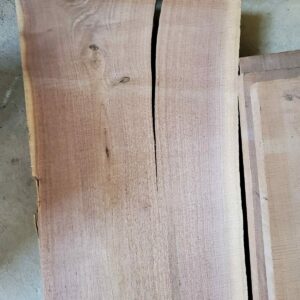I am finishing a speaker enclosure made from black walnut. It has a few splits that i want to fill in with resin, will also use bow ties. The splits are as wide as 3/8 inch. I have read good things about Total Boat and West Systems. I am going to finish the walnut with wood grain filler and satin lacquer. It has been recommended that i insert the bow tie and use resin instead of glue, presumably slow hardening. I would then complete the resin application, plane, sand and then finish. Any opinions on these resin choices
Discussion Forum
Get It All!
UNLIMITED Membership is like taking a master class in woodworking for less than $10 a month.
Start Your Free TrialCategories
Discussion Forum
Digital Plans Library
Member exclusive! – Plans for everyone – from beginners to experts – right at your fingertips.
Highlights
-
Shape Your Skills
when you sign up for our emails
This site is protected by reCAPTCHA and the Google Privacy Policy and Terms of Service apply. -
 Shop Talk Live Podcast
Shop Talk Live Podcast -
 Our favorite articles and videos
Our favorite articles and videos -
E-Learning Courses from Fine Woodworking
-
-
 Fine Woodworking New England Event
Fine Woodworking New England Event -













Replies
I have used those types of resins before. They work well. Keep in mind that often with resins designed for fiberglass work, they get really hot if you go more than say 3/8 of an inch deep. Deep pour resins take a lot longer to cure but they don't heat up as much. Also they give you time to get all the bubbles out. The bubbles will creep towards the top with time as long as the ambient temperature is about 75 to 80°. Then, you just hit it with a heat gun or a blow torch to pop all the bubbles. Keep an eye on it for the first 12 to 36 hours. A good deep poor epoxy that I've had success with is upstart. Again, you can use fiberglass built of resins as well. The heat may not be as much of a problem but the working time and ability to get rid of air bubbles is, at least to me. My experience is a few deep pores with upstart and lots of fiberglass work on boats using marine grade epoxy just like west systems. Good luck.
To fill cracks and glue small pieces, slow cure has no real advantages and these marine brands usually come in large format for such job. West System is a 5:1 mix which is used as is for laminating, it needs thickening for the filling jobs and then you lose the color. So for cabinetmaking I will use it in conjunction with silica powder to get the right consistency but for filling cracks and flooding surfaces I will use 1:1 ratio glue with a 10-20 minute work time either from hobby store or specialized epoxy makers.
(DIGGINGRELIC) Your post would be a classic example for an English teacher to show how a” spell checker” can take you down the tubes. In the same paragraph you have “pour”, “poor” and “pores”. All pronounced the same, but with totally different meanings. That English teacher would really be pointing to the need to proofread before sending.
Otherwise, a good reply.
Or you can blame speech-to-text. None of those words would be flagged by spellcheck as they are all valid words. Maybe your next shop project can be a soap box.
lol... exactly. However, a proof read would have been a good thing - which I admit I did not do.
This guy does almost nothing else and gives a lot of sage advice on epoxy use.
https://www.youtube.com/c/BlacktailStudio
I have good results using products from "System Three".
Spam revival
Recommend using epoxy because hardwood surfaces are shielded because of how well it can penetrate. To keep the wood in good condition, the protective layer it forms can prevent moisture from entering.
This forum post is now archived. Commenting has been disabled